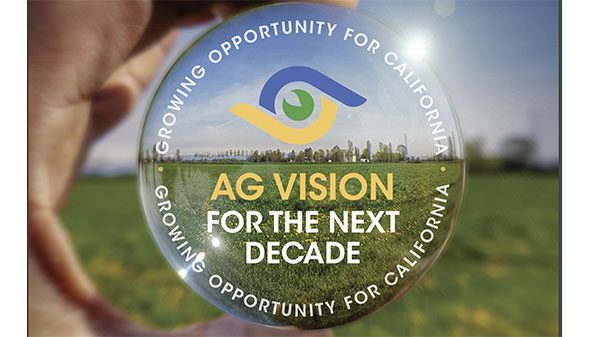A previous column of mine discussed a recent report called Ag Vision for the Next Decade, issued by the California Department of Food and Agriculture (CDFA).
One goal was to “enhance understanding of agriculture.”
Definitely needed. But I do not see that the leadership of California agriculture has matured a great deal on this issue than when I started to cover the field 40 years ago. Then as now, it came down to intoning a slogan about “telling our story.”

The report alludes to this situation: “No matter where we go, we consistently hear agricultural stakeholders talk about the need to ‘tell our story.’”
This tactic is as useless today as it was in 1983.
Nobody wants to hear ag’s story, any more than they want to hear anyone else’s. Things are tough all over.
Besides, what is ag’s story really? A good swath of the public views California agriculture as exploitative and indifferent to the consequences of its own actions. Two principal areas are labor and the environment. The fruit and vegetable industry is at the front and center of these claims.
Many in the public believe that farmworkers are consistently and relentlessly exploited, with unsafe and unwholesome working conditions and poor pay and accommodations.
This perception reaches as far as Paris. Recently Le Monde, the most influential newspaper in France, ran a story with the headline “Half Moon Bay mass shooting reveals misery of life for immigrant workers.” Half Moon Bay mass shooting reveals misery of life for immigrant workers (lemonde.fr)
As for environmental quality, consider this story from PBS News Hour, which says, “California’s San Joaquin Valley, home to large productions of oil, agriculture and warehouse distribution . . . has been out of compliance with Environmental Protection Agency standards for 25 years, earning the region the unwanted distinction of being among the most polluted regions in the country, and residents and air quality activists say there have been few significant solutions.” California has some of the worst air quality in the country. The problem is rooted in the San Joaquin Valley | PBS NewsHour
This article is fairly typical of mainstream media coverage of environmental conditions in the San Joaquin Valley.
Any attempt by ag to “tell our story” without dealing with these issues is merely delivering a soliloquy into a mirror.
Responses usually involve some muttering about “a few bad apples”—the worst possible cliché to use here, since the whole point of the proverb is that one bad apple spoils the barrel.
Are these contentions largely true? If not, then agriculture has to tell its story by factually demonstrating that they are false: that the vast majority of farm laborers are well treated, and that agriculture makes little or no significant contribution to San Joaquin Valley pollution. (No cheating by commissioning bogus studies from think tanks for hire.)
If these contentions are correct to any significant degree, agriculture has the responsibility to take more action than it has and tell the public exactly how and where it is doing so.
There is no other way. This is not just true because I say so. A half century of public relations failures says so.
This article is the second of a two-part series. Read Part 1 here.



